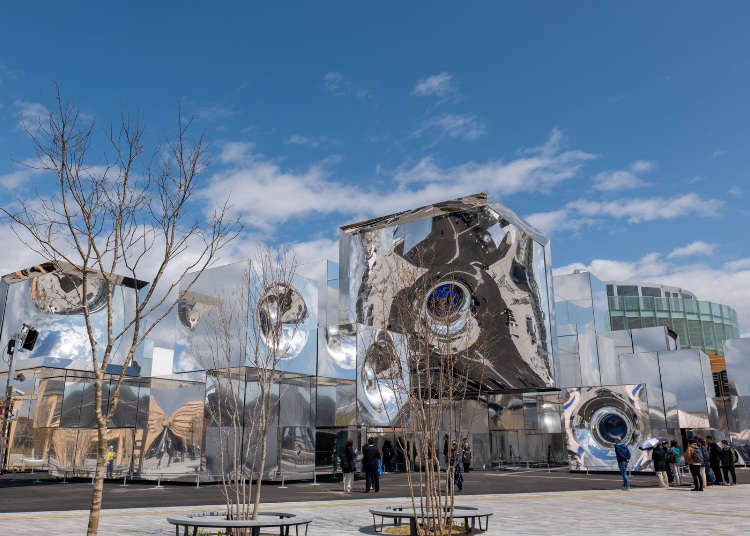
Expo 2025 Osaka-Kansai: My Journey Inside the Signature Pavilions
- Written by: Timothy Sullivan
Parts of the structure’s skin begin to twitch, convulse—moving as if possessed by some unseen creature, or perhaps as though a mechanoid trapped inside is threatening to escape, only to fall still again. The rhythm is eerily close to that of a heartbeat. I’m not sure what to make of it. But I feel my own pulse syncing to its rhythm. I can’t resist—I have to step inside this shiny, living box.
- Table of Contents
What’s the Deal with the Expo 2025 Osaka-Kansai?
Twenty years ago—before Google Maps, before the iPhone, before many other travel conveniences—a colleague mentioned he was going to volunteer at his country’s pavilion at Expo 2005 Aichi. Listening to him rave about the experience, I became curious about what all the hubbub was about—“someday.”
Since then, three other World Expos have taken place around the globe ahead of Expo 2025 Osaka-Kansai. According to the Bureau International des Expositions, the official organizing body, World Expos are “a global gathering of nations dedicated to finding solutions to pressing challenges of our time by offering a journey inside a universal theme through engaging and immersive activities.”
So far, media coverage from around the world has taken a variety of angles, with some questioning the relevance of these costly projects in the digital age. But I’ll leave those questions to the news outlets: I’m a travel editor with Live Japan.
I was awed by the experience—and I hope that by the end of this piece, you’ll decide to visit for yourself.
Heading to the Signature Zone at the Expo’s heart
When visiting Osaka right now, it’s hard to find a spot without Expo 2025 banners or signage featuring a smiling, inviting Myaku-Myaku—the quirky, googly-eyed official mascot. I joined a media tour on April 3, 2025, focused on the eight Signature Pavilions at the heart of the Expo venue. About an hour before the tour began, I was riding Osaka Metro’s Chuo Line toward its terminus: the sparkling new Yumeshima (“Dream Island”) Station, gateway to the Expo 2025 Osaka-Kansai grounds. With great anticipation, I waited for the day to begin. After a briefing, we would be free to explore the pavilions of our choice.
As our group moved forward, the colossal Grand Ring came into view, rising between 12 and 20 meters into the sky—now officially the world’s largest wooden structure. Its mesh of timber beams crisscrossed overhead. The natural warm hues and elegant construction compelled some group members to pause and touch (and even smell) the supporting beams. Soon, some truly unique buildings came into view.
Standing in the center of Inochi Park, surrounded by radically different architecture—from the reflective and convulsing null² pavilion to the dark, shrouded Future of Life pavilion that released a cloud of mist from time to time—I couldn’t help but wonder what might be in store.
As with other pavilions, explanations, signage, and even to an extent, staff communication is done in Japanese as well as English.
Each Signature Pavilion explores the Expo’s theme of “Designing Future Society for Our Lives” in its own way, and it’s marvelous to see so many different perspectives come together. Because of this varied approach, some pavilions have open areas visitors can freely enter and enjoy.
However, most require advance or same-day registration, which can be done on-site or via the Expo 2025 Digital Tickets website.
1. Better Co-Being

Keio University professor Hiroaki Miyata envisions Better Co-Being as a space where people and the planet connect and evolve together. The pavilion is deeply intertwined with the surrounding Forest of Tranquility, created in collaboration with architect Yosuke Fujimoto using regenerated local wood. One of its most poetic touches is an artwork that reveals a rainbow—but only under perfect conditions. “This fleeting moment expresses our message: the future is something we create together, in harmony with nature and each other,” he explained during the press briefing.

The first thing you’ll notice about Better Co-Being is its openness. There are no traditional walls or roof; instead, the space unfolds in a series of areas defined by color, texture, and tone. The pavilion is divided into three “Sequences,” which can be experienced in any order. Upon entering, visitors receive guidance on how to engage with the space through “key catalysts”: the web-based Better Co-Being App and a tactile 3D haptic device called an “echorb.”

Sequence 1, Resonance between People, invites visitors to stroll atop Words Hill, a place designed for reflection—on ourselves, on others, and on the unseen threads that connect us. Red threads stretch into intricate patterns, with suspended letters appearing to float mid-air. The Better Co-Being app can enhance the space with augmented reality, layering in additional words and objects. But even without it, the structure speaks volumes: a visualization of the invisible ties that link strangers. As I chatted with another member of our media tour, I realized this was exactly the kind of serendipitous connection the designers had hoped to nurture.

Descending from Words Hill, I found myself already in Sequence 2—Resonance between People and the World—almost without realizing it. Gentle voices echoed along the path from hidden speakers, counting down from nine to one in a variety of languages and cadences. The web app would have revealed a corresponding narrative, but even without it, the intent was clear: to break through the invisible walls that language sometimes creates. With so many international visitors expected, the space invites us to engage more deeply with each Signature Pavilion—listening, watching, sensing with fresh attention.
Sequence 3—Resonance between People and the Future—is quieter still. A stone path winds through plants, while some 400 slender wires strung with sun catchers sway gently in the breeze. As the late morning sunlight filtered in, tiny rainbows flickered and danced across the space. I was trying to find the perfect angle for a photo when a soft mist began to drift in. The rest of our group scattered slightly, each person trying to catch a glimpse of the rainbow that might appear. It dawned on me that I was in the middle of “co-creating a rainbow”—a moment that can only arise when conditions align just right. In that small but vivid instant, I understood: each person’s position, each action or pause, subtly shapes the experience of those around them. Together, we form the future.

It’s a lot to sit with. What kind of future are we creating—together? What is humanity’s relationship with itself, and with nature? And how do I resonate—with others, with the world, with what’s to come? I didn’t have answers, not really. But I found myself wishing for more time to speak with the people around me, to hear their thoughts and share my own.
Still turning those questions over in my mind, I wandered westward—toward the Dialogue Theater.
2. Dialogue Theater - Sign of Life

Filmmaker Naomi Kawase presents Dialogue Theater – Sign of Life, a one-of-a-kind experience held in a repurposed school building. Visitors move through the entrance hall before joining others—up to 150 people—for an unscripted conversation inside a theater. “This is not a scripted performance but a one-time-only conversation—like life itself: uncertain, spontaneous, and full of potential.” Afterward, guests encounter a newly sprouted ginkgo tree and a water basin before arriving at the “Meeting House in the Forest,” where they’re encouraged to reflect and share. The merging of old and new architecture, Kawase notes, is “unprecedented in Expo history,” underscoring the importance of remembering the past while envisioning the future.

The Dialogue Theater pavilion comprises three distinct buildings—the Entrance Building, Dialogue Theater Building, and Meeting House in the Forest—all of which were originally two historic school buildings from Kyoto and Nara prefectures, dating back to 1930 and 1958.
The experience begins in the Memory Garden, a tranquil rest area with a stately 100-year-old ginkgo tree that once grew near one of the school buildings. As I approached, a brown-eared bulbul trilled a greeting (and I thought, Really? The Expo has wildlife?), and I found myself somehow transported—or caught, or perhaps transformed—into another time.

After checking in, I received a packet. “What is the softest thing in this world?” asked my yellow dialogue card, the question dangling in a speech bubble. It was one of 184 unique questions posed at Dialogue Theater—one for each of the 184 days of the Expo.

The pavilion seeks to inspire deeper understanding through conversation. After passing through the Entrance Building to the Dialogue Theater itself, visitors take a seat. Then, two partners engage in an unscripted dialogue: one an audience member present in the theater, the other located somewhere else in the world. As the conversation unfolds, audience members are invited to consider their role—are they mere spectators, or participants in a broader dialogue? The experience ends with one of five short documentary films, designed to spark follow-up conversations—perhaps with a friend or family member, or even a stranger at the Meeting House in the Forest.

Now, I’m a bit shy and reluctant to speak in front of an audience, yet I felt a twinge of disappointment to have just missed the initial Dialogue Theater session. As I gazed around the meeting foyer, I noticed a message written on the blackboard:
中出分校さようなら
大阪へ行って多勢の人にひてもらってネ!
大阪の地でいつまでも残されますように!!
河野正一
Farewell, Nakade Branch School
I hope many people in Osaka will cherish you!
May your presence live on forever in Osaka!
— Shoichi Kono (a former pupil who attended the Hosomi Elementary School Nakade Branch 65 years ago)
So very touching. This beloved structure had a story of its own, complete with graffiti left behind by students on its pillars and beams. I noticed the Entrance Building had another flight of stairs leading to a third floor. As I ascended, I became aware of the creaks and squeaks in the wooden floor. I wanted to ask this building what it remembers. I wanted to ask the stairs about those who climbed them long ago.

To my left, I saw a series of eight giant wooden planks. Ahead was a mirror inscribed with “Gift” and “In commemoration of the Class of 1955.” Then my gaze shifted to the placards, which explained that these planks were actually speakers made of wood that was 400 years old. That’s when my ears tuned in to the subtle sounds of nature—sounds I had assumed were coming from outside. Quietly, contemplatively, I listened to a sound collage of the forest’s memories: the breath of zephyrs, birdsong, the buzz of chainsaws. Birth to death.

Beside one wall stood an attendant. She watched quietly as my eyes wandered around the room. Then, as if sensing my thoughts, she spoke—softly, gently, but not quite a whisper:
“It’s a calm space, isn’t it?”
I nodded and opened my mouth to respond, but the words caught in my throat. Before I could make sense of it, my eyes welled with tears. My cheeks flushed. Why was I feeling this way?
Perhaps it was the acoustics, or the deeply “Japanese” quality of the sounds—evoking memories of my life in this country: of “forest bathing” in the rugged mountains of Gifu and Nagano; of tiptoeing in socks across the squeaky, worn wood floors of a centuries-old ryokan in Iwate. From our lives comes a range of experiences, and each of us sees the world through different lenses. I felt how precious it is to truly listen to others—before beginning a dialogue with them.
3. EARTH MART

At EARTH MART, broadcast writer and Vice President of Kyoto University of the Arts Kundo Koyama invites visitors to reflect on the relationship between food and life. “How many lives does one human consume over their lifetime?” he asks. The pavilion explores this concept viscerally, prompting visitors to consider how we eat today—and how we should eat in the future.
One of Live Japan’s parent organizations is Gurunavi, a leading restaurant search engine in Japan. Gurunavi also founded RED U-35, one of the country’s largest culinary competitions, launched in 2013 to identify and nurture talented young chefs under 35. Food is always a lively topic at our office—daily conversations revolve around producers, trends, emerging restaurants, and culinary talent. EARTH MART is all about food, and I knew I had to visit.
EARTH MART immediately draws attention as the only Signature Pavilion featuring a large thatched roof, symbolizing the cycle that connects human activity with nature. This striking design was created by young architects from the renowned studio Kengo Kuma & Associates. Like at a convenience store, staff welcomed guests with smiles and cheerful calls of “Irasshaimase!” (Welcome!).

Inside, I stepped into a spacious, dimly lit room, where the walls soon came to animated life, depicting our food cycle and its interdependence with nature. Watching the animation reminded me of something simple yet profound I’d learned years earlier. Before meals, Japanese people say “itadakimasu”, often translated as “I receive.” I once thought it was a polite thanks to the cook, but learned it's actually short for “Oinochi o itadakimasu”—“I humbly receive your life”—a phrase of gratitude for the lives given so that we may live.

When the animation ended, doors opened into the “Marketplace of Life,” vividly illustrating this idea through twelve engaging exhibits. Each aims to foster gratitude toward other lives and the natural world, while emphasizing our shared responsibility for the future.

For instance, “Life of Vegetables” tells the story of Masatoshi Iwasaki, a farmer from Unzen City in Nagasaki Prefecture. While mass-produced vegetables often overshadow flavorful heirloom varieties—many of which vanish when their seeds are lost—Iwasaki preserves these seeds through meticulous, hands-on farming. With his wife, he cultivates 78 unique vegetables, harvesting seeds to safeguard food diversity for future generations.

Further in, visual displays brought abstract concepts to life—like the “Lifetime Supply of Eggs,” which highlights the 28,000 eggs the average Japanese person consumes over 84 years. The interactive “Measure of Life” exhibit invites visitors to place common foods—milk, chocolate, honey—on a special scale, which then shares unique stories and facts through animations. It’s informative and engaging for both adults and children, without feeling too heavy.

Next came the “Marketplace of the Future.” Upon entering, I encountered a strikingly lifelike video of retired sushi master Jiro Ono, owner of Sukiyabashi Jiro. His sushi preparation appeared so real, it seemed each piece materialized before me, alongside detailed notes about the fish. While Sukiyabashi Jiro traditionally uses wild-caught fish, this exhibit symbolized a fusion of tradition and innovation. For this demonstration, Jiro prepared sushi using farm-raised fish developed through aquaculture and selective breeding—visually indistinguishable, yet sustainably forward-looking.

I explored five more exhibits spotlighting different aspects of food technology, from futuristic sweets to kitchens that can record and replay entire recipes. Another space focused on EARTH FOODS 25—a curated selection of ingredients and culinary traditions rooted in Japanese culture, intended to inspire sustainable global eating. Drawing on Japan’s legacy of fermentation, seaweed cultivation, and plant-based wisdom, EARTH FOODS 25 reimagines the value of Japanese cuisine through the lens of coexistence with nature. Visitors can explore introductions to each of the 25 foods, innovative packaging concepts, and dishes created by five chefs using these ingredients.

Before exiting, I reached a final area introducing the “Banpaku-zuke (Expo Pickles)” time capsule project. Guests can receive a ticket for umeboshi plums harvested in Wakayama in 2025 and pickled onsite, to be collected 25 years later in 2050. They’re also invited to write their hopes for the future on ema-shaped wooden cards. After the Expo, these will be blessed at Kumano Hongu Taisha Shrine and stored—along with the pickles—by the Kishu Ume Association until 2050.
Twenty years ago, the iPhone didn’t yet exist. And as I tucked my umeboshi ticket into the plastic protective case around my iPhone, I wondered casually if I might check in on it over the years—its resting place deep in the rugged mountains of Wakayama, at the heart of the Kumano Kodo pilgrimage network. Talk about a unique journey for the future of food.
4. Playground of Life: Jellyfish Pavilion

Musician, mathematician and STEAM educator Sachiko Nakajima’s Jellyfish Pavilion aims to “bring the joy of creation to everyone” through playful and inclusive design. The pavilion hosts workshops, performances, and hands-on experiences accessible to all—including a tea room welcoming visitors in wheelchairs. As for the jellyfish (kurage) theme, Nakajima sees the animal as a symbol of the importance of “play with fluctuation” in life and creativity.
I should have paid more attention to the key word—play. As I’ve grown older, I find myself asking permission before doing many things. Up until now, I’d been approaching the Expo much like a museum: walking from exhibit to exhibit with my hands neatly folded in front or behind me, never daring to touch anything unless it was clearly marked otherwise.

But this is the Jellyfish Pavilion—a space for children and “children” of all ages to gather and co-create. The upper area, known as “Play Mountain” (yes, the pavilion itself is jellyfish-shaped), is open to all without advance reservation. Midway up Play Mountain, I encountered the “FULUto,” a wriggling cluster of playful objects that seemed to sprout from the ground like asparagus. One of the nearby staff members caught my puzzled look and simply said, “You can touch them.”

I looked at her blankly, then over at the quirky FULUto. The bell-shaped head of one was bobbing in the breeze, making soft, chiming sounds.
“Wait, I can touch them?” I asked. She nodded, then gave one a playful tug. Sproing-sproing.
“How fun,” I chuckled, giving the closest one a gentle slap. Its silicone-like surface was surprisingly soft and wobbly, and it let out a subtle, pleasant sound. I had to restrain my dormant inner child, who immediately wanted to run up the incline and bop every single one, just to see what they would do.

At the top of Play Mountain stood the giant wooden “Tree of Creation,” made of around 4,600 pieces of cedar, forming a captivating organic structure. The most striking display there was the “Middle KURAGE Umi-Tsuki,” a “trash art” installation by artist Shinji Nagasaka and producer Nakajima, made using discarded plastic bottles and other plastic waste collected from around the world. Each piece was inscribed with the hopes, dreams, and wishes of the people who helped create it.
All around the Tree of Creation were hands-on activities. One of the more visible ones was the “Co-Kurage,” large strips of fabric where visitors could write their thoughts and feelings in response to different prompts using markers. That, and the piano, were the most immediately familiar to me.
Then a staff member in a wheelchair smiled and gestured toward what I had assumed was just a tabletop. It turned out to be an instrument called the “On-Shoku (Sound-Touch),” covered in a gel-like material. When I pressed it, it emitted a soft tone—accompanied by a gentle glow of color.

There were other unusual instruments too, like the “Kaku-Mei (Corner Life),” a wall of 910 triangles embedded with around 15,000 LEDs, which created patterns and sounds in response to hand movements.

And the “Revived Organ,” which let out ghostly whistles when its foot pedals were pressed.


I can only imagine what this pavilion will be like when children arrive—playing the entire structure like one giant instrument of creation, their faces lighting up as they discover how to use one piece, then another, eventually syncing their movements like a small orchestra. Now wouldn’t that be fun?
I checked my watch and was surprised to see I had but just about an hour remaining for the media tour, and I skimmed over the available tours and was a little disappointed to realize I would not be able to visit all of the pavilions. But if I moved quickly, I would be able to make it through two very unique pavilions.
5. Future of Life

“Future of Life” is where Hiroshi Ishiguro, Professor at The University of Osaka and Visiting Director of the ATR ISHIGURO Hiroshi Laboratories, presents a multi-layered vision of tomorrow. Divided into three zones, the pavilion begins by exploring how life has traditionally been represented through human-like forms in Japanese culture. Next, it offers a near-future narrative imagining daily life in 2075. Finally, visitors encounter a visually arresting glimpse of androids—and humanity—1,000 years from now.
“It’s not just about imagining what’s possible,” Ishiguro said during the media briefing, “but encouraging every visitor to actively participate in creating that future.” In parallel with the physical exhibition space, a virtual version has also been developed within the Virtual Expo app, as well as on Fortnite, allowing people from around the world to explore Ishiguro’s vision.

Roughly a dozen reporters gathered in the foyer, waiting for the doors to open. Staff explained that regular visitors would receive a dedicated smartphone and open-ear, bone-conduction earbuds for a personalized experience. For our group, however, audio would play through speakers so we could move freely through the exhibit.
For decades, Japanese culture has been associated with cutting-edge robotics and technology, often through anime, manga, and film. From Astro Boy to Evangelion to Yokohama Kaidashi Kikou, robots have taken on roles ranging from saviors to companions to quiet observers. So how might Ishiguro answer the question: What is the future of our relationship with machines?
As the doors to Zone 1 opened, we were greeted by a robot shaped like a monkey, its stylized, HAL-like “face” smiling at us as it explained—somewhat cheekily—how Japanese culture has long imbued objects and statues with “life.” From Jomon-era clay figurines to hyper-realistic androids, the zone suggests that humanity has always been fascinated by the boundary between the animate and inanimate—perhaps even by the mystery of consciousness itself.

In Zone 2, we step fifty years into the future. I entered a world where humans and androids co-exist, guided by a “Yamatoroid”—one of several uniquely designed robots featured throughout the space. It was my first close encounter with these human-like companions. Their facial expressions were remarkably detailed—from blinking eyes and subtle mouth movements to micro-expressions that felt almost instinctive. There was something deeply uncanny in how lifelike they were.

As the narrative unfolded through a series of domestic and social vignettes, I was pulled into a vision of everyday life alongside androids. It was futuristic, yes, but strangely plausible. I joked inwardly that there might be a store near the exit where I could buy a Yamatoroid of my own.

But the exhibit didn’t suggest ownership so much as coexistence—these weren’t tools, but fellow beings. I sensed that Ishiguro was intentionally keeping the boundaries blurred, dropping question after question rather than giving easy answers.

Finally, I turned the corner into Zone 3—life a millennium into the future. The room was dark, with shafts of colored light cutting down through a haze, forming a glowing circle around three figures. Were they androids? Humans?

The dim light didn’t give it away immediately. Their forms were elegant, their presence uncanny. For a moment, I wondered whether they might actually be live performers.

This zone conjured the idea of mahoroba—an ancient Japanese term describing a distant land of peace and beauty. As sound burst through the space, the figures began to move. They danced, slowly at first, then more fluidly, their arms swaying in intricate, expressive motions. Were they cyborgs? Or had humans evolved beyond physical form entirely, becoming something else—something hybrid?
As the performance continued and the narrative deepened, I found myself watching the nearest dancer closely. Their gaze shifted, their eye blinked—and for just a moment, it met mine. I froze. Was that blink part of the choreography, or...was it something else?

6. null²

In null², media artist Yoichi Ochiai explores the idea of “refining life” by blending nature and technology into what he calls “digital nature.” At its core is a massive mirrored sculpture that moves and morphs—an installation only possible on the scale of an expo. Visitors interact with an AI “mirror-body,” a digital version of themselves that they can take home. This experience, Ochiai says, prompts reflection on “what separates humans from machines.” It’s a space where the line between real and digital blurs, challenging guests to reconsider identity and existence.

Finally, I arrive at what I consider the most visually striking of the Signature Pavilions: an angled structure wrapped in mirror-like film, reflecting the afternoon sky. Clouds and people’s silhouettes twist and bend across its curved surfaces as I move around it. According to Ochiai, this is the first of two mirrors—representing the “now” and what exists in the physical world.

Though stunning, it’s something else that grabs my attention: parts of the structure’s skin begin to twitch, convulse—moving as if possessed by some unseen creature, or perhaps as though a mechanoid trapped inside is threatening to escape, only to fall still again. The rhythm is eerily close to that of a heartbeat. I’m not sure what to make of it. But I feel my own pulse syncing to its rhythm. I can’t resist—I have to step inside this shiny, living box.

After removing our shoes, we’re led into a mirrored room with a fluid LED floor display that oozes and shifts in a colorful, organic manner.

But it’s the monolith in the center that pulls my focus—something that could easily have stepped out of Arthur C. Clarke’s universe. But where 2001’s monolith was silent and black, this one erupts to life.

Ochiai calls this the second mirror—one that emerges through the visitor’s own body, engaging in a kind of dialogue with “computational nature.” The monolith swivels, pulsing with glitch art and flashy animations, posing questions that dare visitors to examine whether they are human.


Those who opt in can have their bodies scanned, creating a digital version of themselves that can interact in strange, mesmerizing ways. I watched as one guest conversed with her mirror-self, only to see that digital version morph into other forms—shifting, warping, evolving.
The experience culminates in a dazzling show of animated digital art. Shapes burst apart into pixelated chaos, only to be drawn back into smooth, continuous lines—like watching a battle between lightning and liquid plasma. The soundtrack pounds—a fusion of cyberpunk textures, metallic percussion, and electronic fragments. It’s more sensation than music.

“null²” asks us to consider that form is emptiness, and emptiness is form. And amid the frenzy of light and sound, I found myself wondering: Had I just walked through an exhibit—or had I, somehow, become one of the beings now haunting the building?
Two Signature Pavilions remain
All told, I was able to visit six Signature Pavilions in about three hours. For the most part, I moved quickly through each space in order to experience as much as possible. I didn’t participate in the various digital experiences available, as those would have taken considerably more time. It's easy to imagine that this zone alone could take half a day to fully explore—especially if one wants to pause and reflect on the messages each producer is presenting.
I was, unfortunately, unable to visit two of the Signature Pavilions. However, during the media briefing, each producer shared brief comments introducing their concepts.
7. LIVE EARTH JOURNEY

For Animation Director, Mechanic Designer, and Vision Creator Shoji Kawamori, the LIVE EARTH JOURNEY pavilion is about dissolving the boundaries between humans and all other lifeforms. “Life is transformation and merging,” he explained. The pavilion invites visitors to consider how deeply interconnected we are with our environment. Eating a fish from Osaka Bay, for instance, means becoming part of that fish’s cycle—right down to the seawater it drank. Even the sunlight that nourishes all life arrives only after a 499-second journey through space. Kawamori hopes visitors will come away with the visceral sense that “a part of you was inside the sun just moments ago,” and that all life resonates together in ways both scientific and poetic.
8. DYNAMIC EQUILIBRIUM OF LIFE

As the only biologist among the producers, Shin-Ichi Fukuoka brings a scientific lens to the DYNAMIC EQUILIBRIUM OF LIFE pavilion, centered around the essential question: What is life? His answer lies in the concept of “dynamic equilibrium”—the idea that life is sustained through constant flow. “We’re continuously exchanging matter, energy, and information with our environment,” he shared. Through a world-first immersive 3D theater, visitors can experience this principle firsthand and gain a deeper understanding of how life unfolds—moment by moment—in a delicate, ever-shifting balance.
Share your story!

While I found each of the Signature Pavilions to be intriguing in their own way, I suspect many visitors will ask: Is this particular pavilion worth seeing? The truth is, they each offer something different. Some are highly interactive, while others feel more like art installations or conceptual museum pieces. Some lean digital; others are grounded in physical, tangible experience.
But whichever ones you choose to visit, I believe you’ll come away with something worth sharing—whether with friends, family, or fellow travelers. And I hope you will share some of your story with us on our socials!
-
Expo 2025 Osaka-Kansai大阪・関西万博
- Address 1 Chome Yumeshimanaka, Konohana Ward, Osaka, 554-0044
Website: https://www.expo2025.or.jp/

Chief English Editor
LIVE JAPAN
Timothy Sullivan is a senior English editor who has worked with LIVE JAPAN since 2017. Originally from New York, USA, he has over two decades of experience in Japan and more than 15 years in the digital media sphere. Timothy has played pivotal roles in assisting Japanese enterprises and regional authorities connect with international audiences. When he isn’t traveling, he is helping producing polished copy for LIVE JAPAN, one of Japan’s largest tourism platforms. He received a bachelor’s degree in Communication from the State University of New York College at Geneseo.
*Prices and options mentioned are subject to change.
*Unless stated otherwise, all prices include tax.
Recommended places for you
-
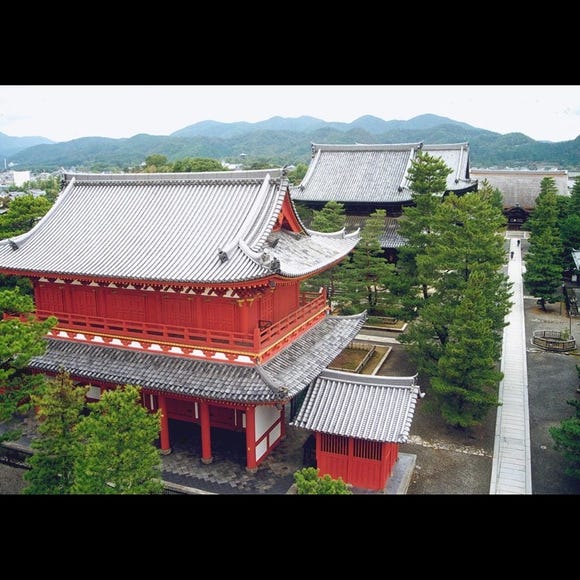
Myoshin-ji Temple
Temples
Arashiyama, Uzumasa
-
Goods

Yoshida Gennojo-Roho Kyoto Buddhist Altars
Gift Shops
Nijo Castle, Kyoto Imperial Palace
-

Jukuseiniku-to Namamottsuarera Nikubaru Italian Nikutaria Sannomiya
Izakaya
Kobe, Sannomiya, Kitano
-

ISHIDAYA Hanare
Yakiniku
Kobe, Sannomiya, Kitano
-

Kambei Sannomiyahonten
Yakiniku
Kobe, Sannomiya, Kitano
-

Kanzenkoshitsuyakinikutabehodai Gyugyu Paradise Sannomiya
Yakiniku
Kobe, Sannomiya, Kitano
-

Top Things to Do in Kansai in May 2025: Events in Osaka, Kyoto & Beyond
by: Kaori Kimura
-

teamLab Announces New Permanent Kyoto Museum Opening in Fall 2025
-

Experience Hotel New Otani Osaka: Overnight Journey of Japanese Culture and Fine Dining (2-Day Itinerary)
by: Yotsuka Hizuki
-

What to Eat and Buy at Expo 2025 Osaka–Kansai: Special Menus and MyakuMyaku Crafts
by: Kaori Kimura
-

Hotel Universal Port: A Fun-Filled Stay Where You Can Meet the Minions (In-Depth Review)
by: Tabiningen
-

2025 Osaka-Kansai Expo: Convenient Tips for a Stress-Free Visit
by: Kaori Kimura
Inspiration for Accommodations
-

Spacious Family Hotel in Namba: 20 Comfortable Stays for Family Fun
-
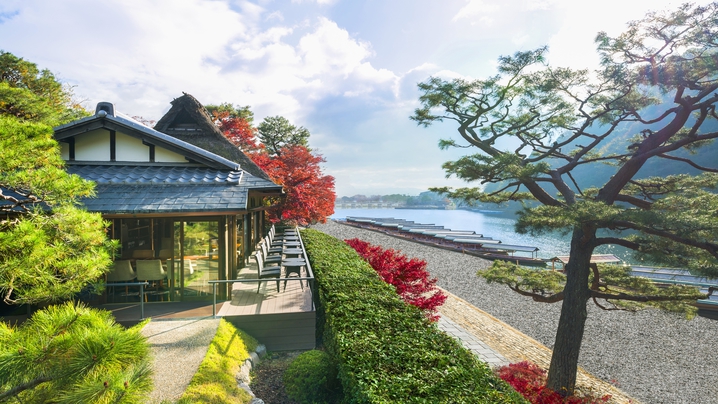
Charming Hotels to Enjoy the Spectacular Views of Arashiyama's Autumn Leaves from Your Room
-

Experience Stunning Views of Osaka Castle from Private Spaces: Top Hotels Near Osaka Castle
-
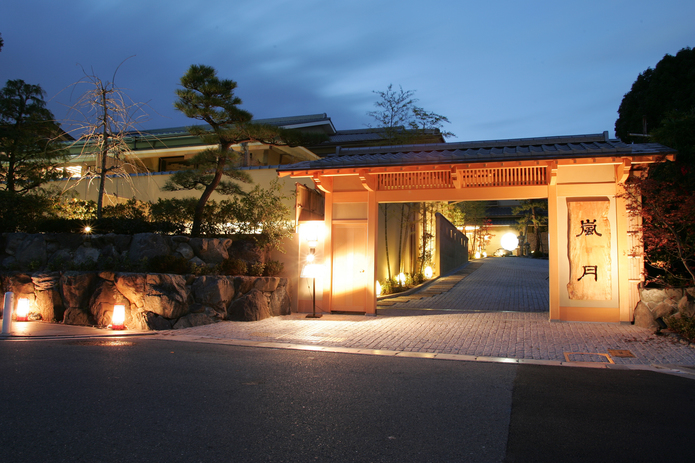
Recommended by Visitors! Arashiyama's Best-Rated Hotels
-

Family-Friendly Universal Studios Japan Hotel with Excellent Access
-

Enjoy a Comfortable Stay in Osaka! 10 Hotels with Convenient Airport Shuttle Services
-

Top 10 Recommended Hotels Near Namba Station with Great Access
-
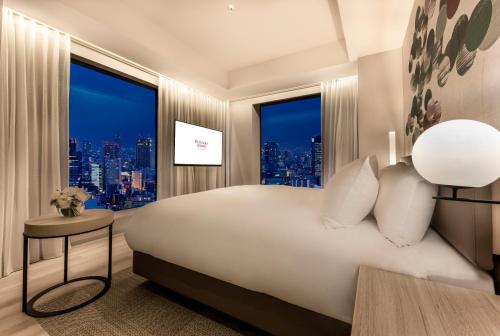
Enjoy Night Views from Your Room! Recommended Hotels in Namba Area
-

Autumn in Japan 2025: Fall Foliage Forecast & Where to Enjoy the Colorful Leaves (+Tour Info)
-

38 Best Things to Do in Kyoto: See, Eat, and Shop Your Way Through Japan's Cultural Capital
-

Michelin Star Restaurants & More: 3 Best Okonomiyaki Shops in Dotonbori Osaka
-

Inside Kobe Tower: Fun Things to Do at the Symbol of Kobe
-

Hoshinoya Kyoto: This Incredible Japanese Hotel Welcomes You By Boat on a Sakura-Filled River
-

5 Amazing Kyoto Festivals You’ll Want to Experience During Your Next Trip
- #best gourmet Osaka
- #things to do Osaka
- #what to do in kyoto
- #what to bring to japan
- #best gourmet Kyoto
- #new years in Osaka
- #what to buy in nanba
- #Visiting Osaka
- #onsen tattoo friendly arima
- #daiso
- #Visiting Kyoto
- #best japanese soft drinks
- #japanese fashion culture
- #japanese convenience store snacks
- #japanese nail trends
- Expo 2025 Osaka-Kansai大阪・関西万博













